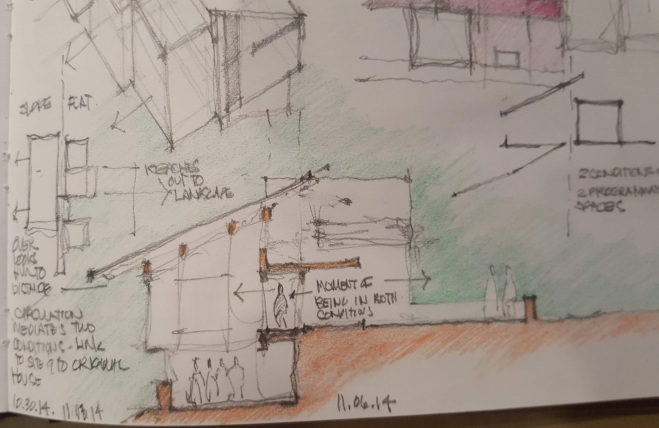
Theory and abstraction are not the same. I’ll merely scratch the surface.
When I started architecture school in 1986, the first two core classes of Kent State University’s curriculum in those days were Theory of Architecture I and II. Second year greeted us with Theory III and IV. Most classes had Roman numerals IV, V, and even VI before we left. There was theory, and there was design, there were students with heads spinning wondering how to make sense of it.
I worked during the summers at an office that lent balance to my schooling. To this day, I cannot commit to whether that was beneficial or a detriment.
Fast forward to 2019 and a practice I’ve run for over sixteen years, and I can readily answer yes, architecture cannot exist without a theoretical basis in my practice – or even in my mind. Why shouldn’t it? Do we submit to mere pragmatism this far from school because the realities of life put their ‘half-nelson’ twist on us to fall to our knees and capitulate?
No, it doesn’t.
A relevant architectural theory for me rests largely in the connection of how something looks to how something works. It goes beyond Mr. Sullivan’s ‘Tall Office Building’ essay, but that’s a good start. I won’t explain that any further and don’t use that incorrectly cited phrase. Read on.
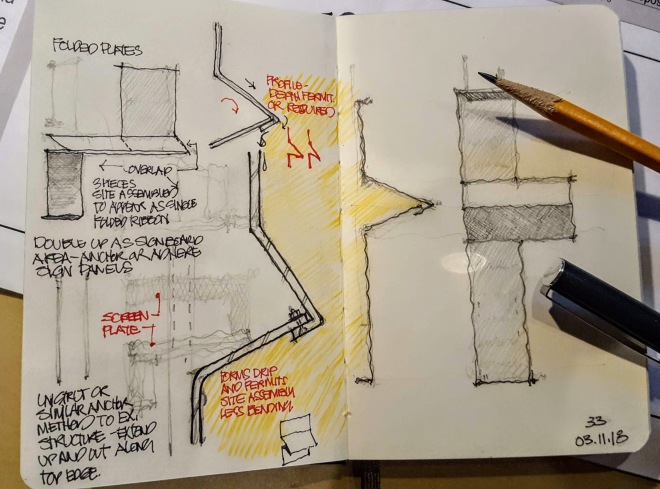
Architecture emanates in my practice from twenty-eight years of experience and six years of college; true, it is quite different from those early years of school. Thus, each project originates from a balance of acknowledging the abstract and the concrete, the material and the immaterial. I rarely can see the line of division.
Plus, I read – often.
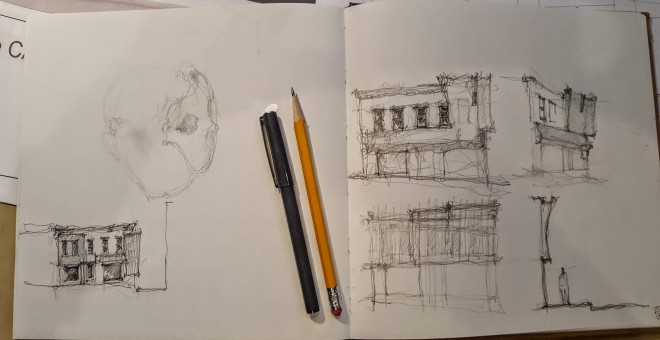
OK, I’ll surrender one disclaimer – not every project has a cryptic meaning behind it. When one works on small projects, some might be maintenance related or a few partition changes to address a functional change within an organization. A garage addition is just a garage addition – or is it?
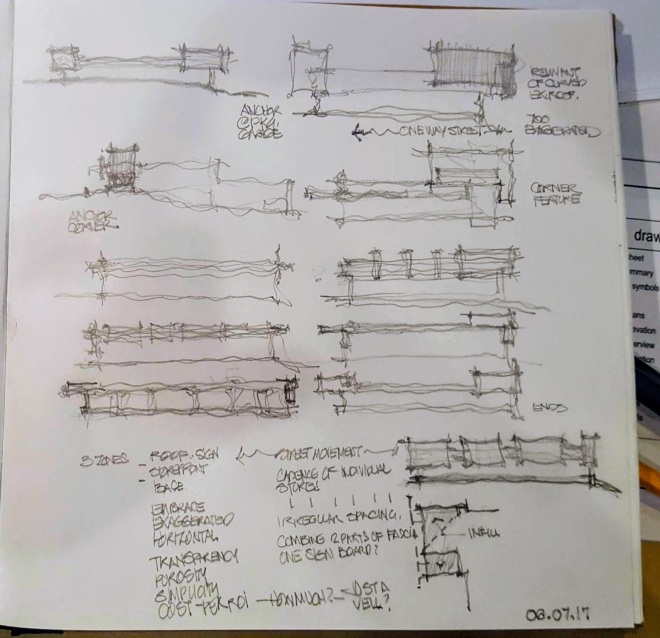
Addressing the theoretical or theory of architecture is tough to unravel in a single post, so we’ll narrow it down to discussing architecture in abstraction and not the mere building. They are related, but not necessarily identical. Otherwise, we’ll be here all day. Furthermore, architectural theory goes far beyond one’s opinion or a method of professional practice.
Recent projects of mine do address metaphor (i.e., rocks and metal for a jewelry store addition), symbolism (a mask to hide a scarred building like the Phantom of the Opera hid his scar), or even the challenging of parochial mindsets to rationalize the existing and new intervention. We ask polarizing questions like ‘how does one add onto or touch an existing structure?’
For the record, the sketches in this post are largely new and all but one are for projects under construction.
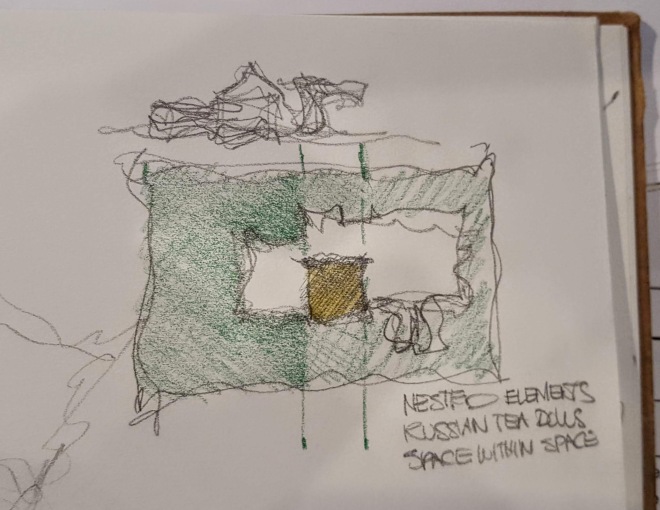
Back in 2014, I addressed this topic, and I wrote “what I appreciate reading the most is when writers can explore deep concepts with simple explanations rather than proposing shallow concepts with complex rhetoric. To me that’s deep.”
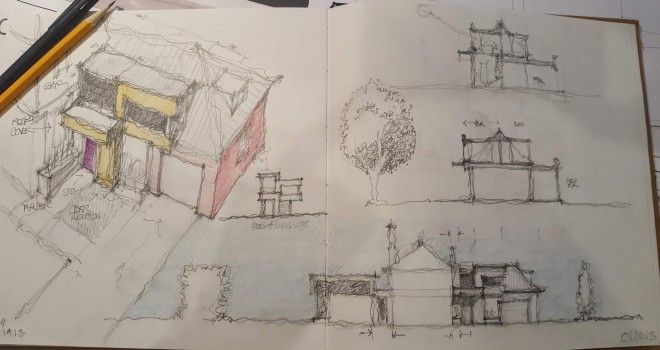
When approaching a project outside of an academic studio, within the boundaries (I won’t say constraints) of a real practice for an actual client, a solitary influencer of form and space cannot dominate, or at least cannot bully the other requirements into conceding their importance. Maybe this is one area where academia must divulge the honesty of how buildings get built.
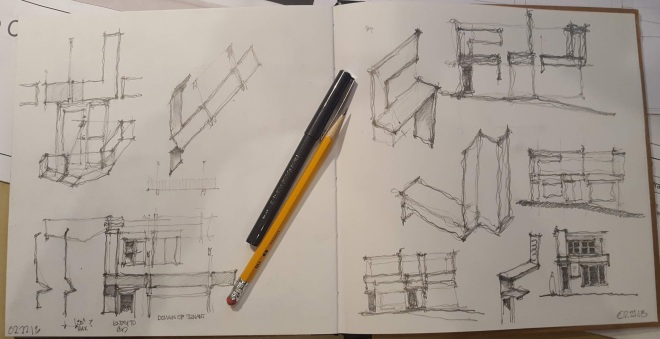
I started my practice in 2003 to explore the intersection between practice and teaching. It’s one I hold onto with a somewhat tight fist, even though I placed teaching on the shelf at the end of 2014 for now.
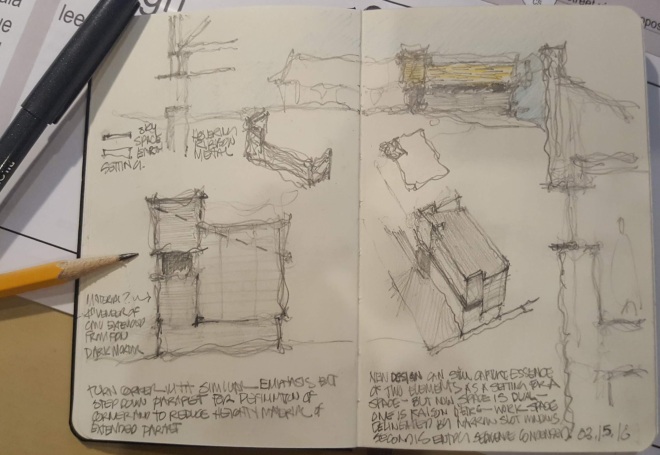
Too often I see or hear about architects who have left their academic thought process. Perhaps, they are not wired to ride the esoteric, maybe the tyrannical nature of school bled it out of them, or I wonder if the day-to-day practice is too big of a bear to wrestle each day without ultimately yielding.
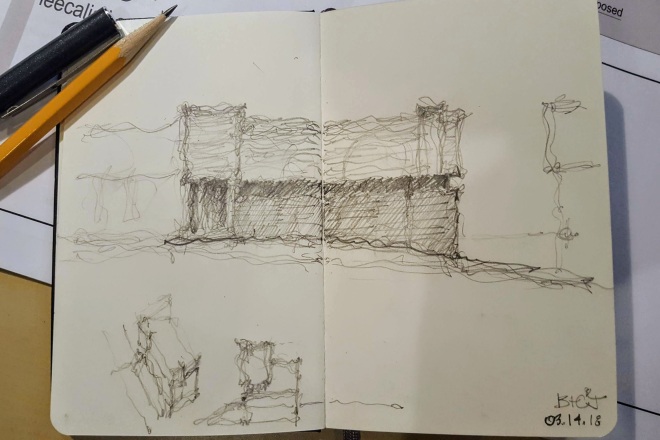
Theory is ontologically connected with architecture. Therefore, it will remain alive, as long as we are architects, human and not mere technicians. I’ll politely ask AI or the robots to let me run my course before they completely subjugate our profession.
I sincerely hope my friends’ post below expands on this thinking. Please read their posts.
Matthew Stanfield – FiELD9: architecture (@FiELD9arch)
You Can Do Better
Eric T. Faulkner – Rock Talk (@wishingrockhome)
Theory — If Apple Practiced Architecture
Michele Grace Hottel – Michele Grace Hottel, Architect (@mghottel)
Theory/Practice
Jim Mehaffey – Yeoman Architect (@jamesmehaffey)
In Theory / In Practice
Mark Stephens – Mark Stephens Architects (@architectmark)
Theory and Practice
Larry Lucas – Lucas Sustainable, PLLC (@LarryLucasArch)
The Theory and Practice of Full-circle Architecture


Nice post – yes I like the “deep concepts with simple explanations rather than proposing shallow concepts with complex rhetoric”
I really resonate with the difference between abstraction and theory in architecture at least as of recent. I’m still a young designer in the field and for the most part during college have been relying on abstraction when understanding architecture and when creating my own.
But now as an architectural apprentice, for me the biggest challenge is bringing meaning to the rigid demands of the “real world”, and I think theory has been the only bridge that connects the needs of the real world and the abstract endeavors of the architect and I think without it I’d probably go crazy.
Thank you sir for this post, seemed very timely for me.
Ivan, thanks for reading and for sharing your story. Some days the real world can be disappointing, but there’s nothing better than building real things.
Theory and practice are the two sides of the same coin. Whether in architecture orany other field,onecannot rely solely on either of the facet to excel in any profession. Irrespectiveof the leap strides that one may make in the arena of practice, theorycannot be done away with. Period.Thankyou so much for reiterating this.
Beautifully articulated . Thanks for sharing